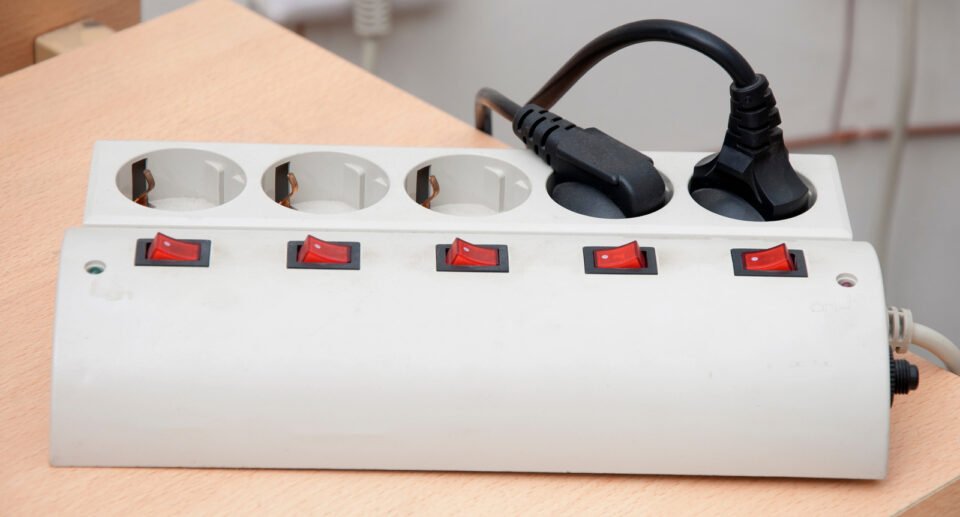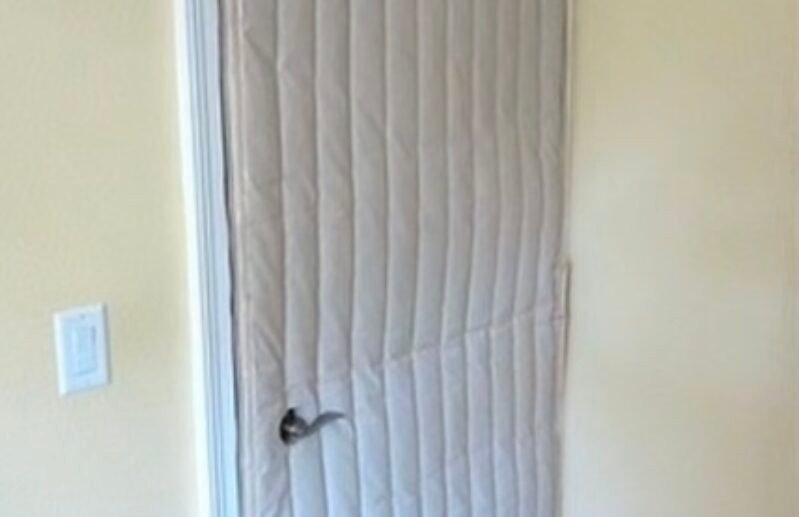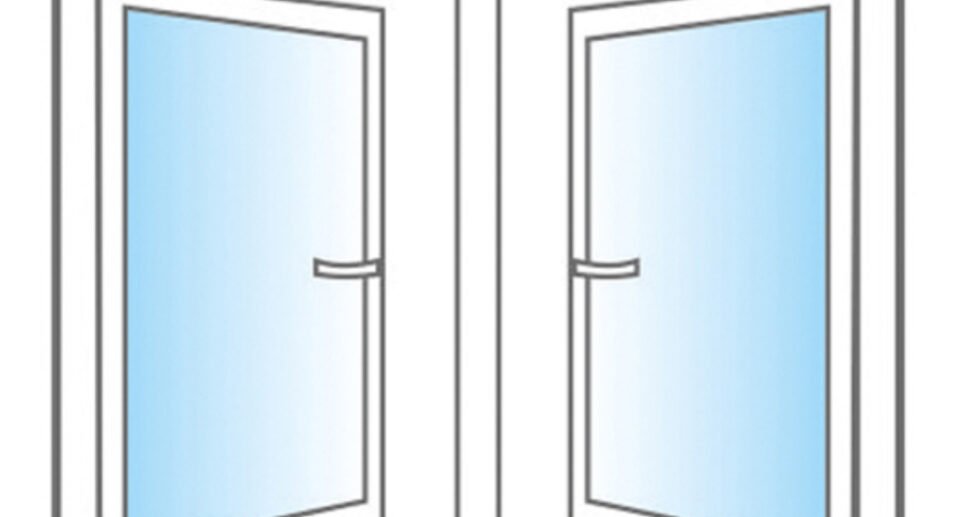Is a Whole House Surge Protector Worth It? We Reveal the Truth

Table of Contents
ToggleAfter we had 3 PCB’s fail in our ac units costing $000’s we knew we had to do something. After researching the options we settled on a Schneider whole house protector costing $200.
Whole house surge protectors are designed to protect your home from power surges that can damage your electrical appliances and devices. These surges can occur due to lightning strikes, power outages, and other electrical disturbances.
While surge protectors are commonly used to protect individual devices, whole house surge protectors offer protection for your entire home.
One of the main benefits of whole house surge protectors is that they provide comprehensive protection for all the electrical devices and appliances in your home. This means that you don’t have to worry about individual devices being damaged by a power surge.
Additionally, whole house surge protectors are typically more effective than individual surge protectors because they are designed to handle larger surges. They are also installed at the main electrical panel of your home.
While whole house surge protectors offer many benefits, there are also some potential drawbacks to consider. For example, they can be more expensive to install than individual surge protectors. Additionally, they may not protect against all types of power surges, so it’s important to select the right surge protector for your needs.
Key Takeaways
- Whole house surge protectors offer comprehensive protection for all the electrical devices and appliances in your home.
- While they can be more expensive to install than individual surge protectors, they are typically more effective and can provide greater peace of mind.
- It’s important to select the right surge protector for your needs and budget, and to consider the potential drawbacks before making a decision.
Understanding Surge Protectors
What Is a Surge Protector?
A surge protector is an electrical device that protects your electrical system from power surges. Power surges are sudden spikes in voltage that can cause damage to your electrical appliances and devices.
Surge protectors work by diverting excess voltage away from your devices and appliances, and into the ground.
There are different types of surge protectors available in the market, and they are classified based on their voltage protection rating. Surge protectors are rated as Type 1, Type 2, or Type 3, depending on their level of protection.
Types of Surge Protectors
Type 1 surge protectors are installed at the main electrical service entrance and are designed to protect against external power surges, such as lightning strikes. They offer the highest level of protection and are recommended for areas that experience frequent lightning strikes.
Type 2 surge protectors are installed at the sub-panel or distribution panel and provide protection against internal power surges. They are recommended for areas that experience frequent power fluctuations.
Type 3 surge protectors are installed at the point of use and protect individual appliances and devices. They are the least expensive and offer the lowest level of protection.
When it comes to protecting your home from power surges, a whole house surge protector is an effective solution. It provides protection for your entire home, including all the electrical appliances and devices. A whole house surge protector can help prevent damage to your electrical system and save you money in the long run.
Benefits of Whole House Surge Protectors
Whole house surge protectors are devices that are installed in the electrical panels of homes to protect them from power surges. These devices have several benefits, including comprehensive coverage, protection for sensitive electronics, and increased safety and peace of mind.
Comprehensive Coverage
One of the main benefits of a whole house surge protector is that it provides comprehensive coverage for a home’s electrical system. Unlike power strips or individual surge protectors, which only protect the devices plugged into them, a whole house surge protector protects all of the electrical devices in the home. This includes appliances, electronics, and even light bulbs.
Protection for Sensitive Electronics
Sensitive electronics, such as computers, televisions, and audio equipment, are particularly vulnerable to power surges. A whole house surge protector can protect these devices from damage caused by power surges, which can save homeowners the cost of repairing or replacing expensive electronics.
Increased Safety and Peace of Mind
Power surges can not only damage electronics but also pose a safety risk. In some cases, power surges can start fires, which can be devastating. By installing a whole house surge protector, homeowners can reduce the risk of electrical fires and increase their peace of mind.
Installation Considerations
When it comes to installing a whole house surge protector, there are several factors to consider. This section will cover some of the key considerations that homeowners should keep in mind before deciding to install a surge protector.
Professional vs. DIY Installation
While some homeowners may be tempted to install a whole house surge protector themselves, it is important to note that this is not a DIY project. Licensed electricians are required to install whole house surge protectors, as the installation process involves working with the electrical panel and wiring in the home.
Attempting to install a surge protector without the necessary knowledge and experience can be dangerous and may result in damage to the home’s electrical system.
Electrical Panel Requirements
Before installing a whole house surge protector, it is important to ensure that the home’s electrical panel is compatible with the surge protector. Most surge protectors require a double-pole breaker and a dedicated space in the electrical panel.
Homeowners should consult with a licensed electrician to determine if their electrical panel meets the requirements for a surge protector installation.
Cost Factors
The cost of installing a whole house surge protector can vary depending on several factors, including the size of the home, the type of surge protector, and the cost of labor.
Professional installation by a licensed electrician is typically recommended, as this ensures that the surge protector is installed correctly and safely. The cost of professional installation can range from $200 to $500, depending on the complexity of the installation.
Homeowners should also factor in the cost of the surge protector itself, which can range from $100 to $400.
Cost-Benefit Analysis
Initial Investment vs. Long-Term Savings
When considering whether a whole house surge protector is worth the cost, it’s important to look at the initial investment versus the long-term savings.
The cost of a whole house surge protector can range from $50 to $300, with an average installation cost of $175 by a licensed electrician. While this may seem like a high initial cost, it’s important to consider the potential long-term savings.
A whole house surge protector can protect all of the appliances and electronics in a home from power surges, which can save homeowners money in the long run.
Without a surge protector, power surges can damage or destroy expensive electronics, resulting in costly repairs or replacements. By investing in a whole house surge protector, homeowners can avoid these expenses and potentially save thousands of dollars over the life of their home.
Impact on Home Insurance
Another factor to consider when deciding whether a whole house surge protector is worth the cost is the impact it can have on home insurance.
Some insurance companies offer discounts for homes that have surge protectors installed, as they can reduce the risk of damage from power surges. Homeowners should check with their insurance provider to see if they offer any discounts or incentives for installing a whole house surge protector.
Additionally, having a whole house surge protector installed can improve the overall quality and safety of a home’s electrical system. This can be especially important for older homes or homes with outdated electrical systems.
With a limited lifetime warranty, homeowners can have peace of mind knowing their investment is protected for years to come.
Potential Drawbacks
While whole house surge protectors offer a lot of benefits, they also come with potential drawbacks that homeowners should consider before making a purchase decision.
Upfront Costs
One of the most significant drawbacks of whole house surge protectors is their upfront cost. The cost of a whole house surge protector can range from $100 to $400, not including installation fees.
Hiring a professional electrician to install the surge protector can cost up to $200 an hour, and it can take up to two hours to complete the installation.
While the initial cost of a whole house surge protector may seem high, it is essential to consider the long-term benefits. A whole house surge protector can protect all of the electrical appliances and devices in a home, potentially saving homeowners thousands of dollars in repair and replacement costs.
Maintenance and Replacement
Another potential drawback of whole house surge protectors is the need for maintenance and replacement.
Over time, surge protectors can wear out and become less effective at protecting against power surges. It is essential to have a professional electrician inspect and replace the surge protector regularly to ensure it is still functioning correctly.
Additionally, whole house surge protectors may need to be replaced after a significant power surge event. While this is rare, it is important to be aware of the potential for replacement costs.
Real-World Applications
Whole house surge protectors are an essential investment to protect your home’s electrical devices from power surges. Here are some real-world applications of whole house surge protectors:
Protection from External Surges
External surges are caused by lightning strikes and storms. These surges can cause significant damage to your home’s electrical devices.
Whole house surge protectors can protect your home’s electrical outlets, plugs, switches, interior wiring, and light bulbs from harmful surges in power.
A whole house surge protector can also ensure that more expensive electrical appliances such as air conditioners and heaters remain unharmed during a surge event. This can save you a lot of money in the long run, as replacing these appliances can be expensive.
Guarding Against Internal Fluctuations
Internal fluctuations are caused by downed power lines and power fluctuations. These fluctuations can also damage your home’s electrical devices.
A whole house surge protector shields the appliances plugged into an electrical socket. These protectors will control a power surge and keep the electrical items safe.
Such surges can cause harm to electrical appliances, such as computers and televisions. A whole house surge protector can save you the replacement costs of your many sensitive and expensive electrical devices, from your home entertainment to your kitchen appliances.
Selecting the Right Surge Protector
When selecting the right whole house surge protector, there are a few factors to consider to ensure compatibility with your home’s electrical system and specialized protection options.
Compatibility with Home Electrical System
It is important to choose a surge protector that is compatible with your home’s electrical system. The National Electrical Manufacturers Association (NEMA) has established standards for enclosures that protect electrical equipment against environmental conditions.
Surge protectors come in different NEMA ratings, including NEMA 1, NEMA 4, and NEMA 4X.
NEMA 1 is the standard rating for indoor use, while NEMA 4 is rated for outdoor use and provides protection against windblown dust and rain. NEMA 4X offers additional protection against corrosion and is suitable for harsh environments.
When selecting a surge protector, make sure that the NEMA rating is appropriate for your home’s installation location.
Specialized Protection Options
In addition to NEMA ratings, surge protectors also offer specialized protection options.
For example, some surge protectors come with a surge protection device (SPD) that provides additional protection against power surges.
The Eaton CHSPT2SURGE SPD Type 2 Surge Protector is a popular choice for its affordability and effectiveness.
It offers protection for up to 80,000 amps and is rated for both indoor and outdoor use.
Siemens’s premium FS140 whole-house surge protector is another popular choice for its ability to protect against frequent power outages.
This Type 2 SPD can handle surges up to 140,000 amps and is recommended for use in regions with frequent lightning strikes.
When selecting a surge protector, it is important to consider the specific protection needs of your home.
This includes the type and frequency of power surges in your area, as well as the types of electronics and appliances that need protection.
The Verdict on Whole House Surge Protectors
Are They Worth Installing?
Whole house surge protectors are designed to protect all the electrical devices in your home from voltage spikes and surges.
They are installed at the main electrical panel and work by diverting excess voltage to the ground. But are they worth the investment?
The answer is: it depends.
If you live in an area with frequent lightning strikes or power outages, a whole house surge protector can be a worthwhile investment.
It can protect not only your expensive appliances, but also your sensitive electronics, such as computers and televisions.
However, if you live in an area with stable electrical service, the benefits of a whole house surge protector may not outweigh the cost of installation.
The cost of a whole house surge protector can range from $200 to $500, depending on the model and the complexity of the installation.
Additionally, installation requires a licensed electrician, which adds to the cost.
It’s important to note that a whole house surge protector is not a guarantee against damage from electrical surges.
It can only protect against surges that enter your home through the electrical service panel. Surges that enter through other means, such as phone or cable lines, may still cause damage.
Frequently Asked Questions
A whole house surge protector provides protection to all the electrical equipment in a house from power surges.
The main benefit of installing a whole house surge protector is to protect your appliances and electronics from damage caused by power surges.
The drawback of installing a whole house surge protector is the cost of installation, which can range from $100 to $400.
Whole house surge protectors function by diverting excess voltage away from your home’s electrical system.
When a power surge occurs, the surge protector detects the excess voltage and redirects it to the ground.
This prevents the excess voltage from reaching your home’s appliances and electronics and causing damage.
The cost of installing a whole house surge protector can vary depending on the type of surge protector and the complexity of the installation.
On average, homeowners can expect to pay between $100 and $400 for the surge protector and installation.
A whole house surge protector can last up to 20 years with proper maintenance.
It is important to have the surge protector inspected regularly to ensure it is functioning properly.
When choosing a whole house surge protector, it is important to consider the surge protector’s clamping voltage, response time, and maximum surge current rating.
The clamping voltage should be as low as possible, and the response time should be fast.
The maximum surge current rating should be high enough to protect all of your home’s appliances and electronics.
Yes, a whole house surge protector can save money in the long run. It does this by protecting your home’s appliances and electronics from damage caused by power surges. This can prevent costly repairs or replacements of damaged equipment.
Additionally, some insurance companies offer discounts for homes with whole house surge protectors installed.

Hello, I’m Keith Jones. I’m the author and head of content here of door and window guide. I’ve been in the window and door industry for over 10 years in the UK and North America. I’ve had quite a few roles during my career mainly in Worldwide sales. I’m now semi retired so I thought I’d put my knowledge to good use educating people about all they might need to know about door and window related topics.






